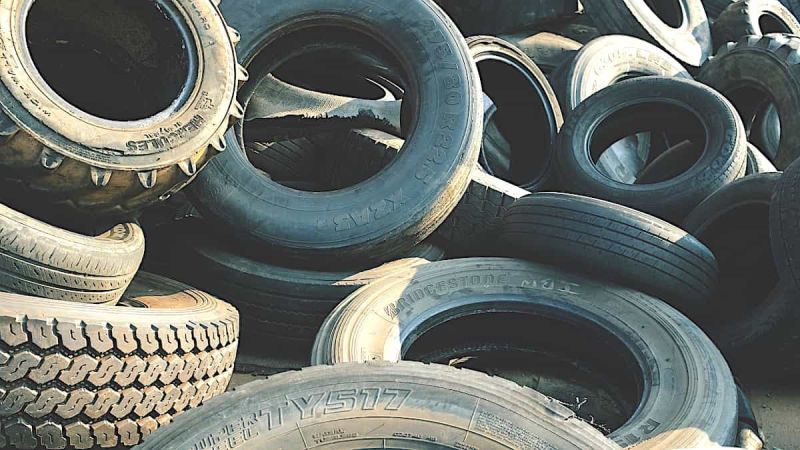The Tire Retread Question
In a recent Consumer Reports analysis of automotive tires, titled “Should You Buy Re-Tread Tires?” they warn consumers that while it may seem like a good way to save money and help save the environment by purchasing re-treaded tires, that times have changed and---at least for non-commercial vehicles---it makes better sense to play it safe by buying new tires after the old ones either wear out or become damaged.
“Tire re-treading involves taking a tire that is worn out and removing the remaining layer of old tread and applying a new tread to that tire so you have a fresh tread again,” explains Ryan Pszczolkowski, Consumer Reports tire program leader. “This was common back in the day of bias tires when you only got 10k-20k miles out of car tires. Nowadays, virtually all car tires are longer lasting. Radial tire design can last 70,000 or 80,000 or more miles if properly maintained.”
However, it’s not just about the extended tire life of tires today that consumers should focus on; but, that there is a risk that the retread is placed over supporting sidewalls and steel belts that are stressed and could conceal hidden damage in what otherwise looks like a new tire.
What the Numbers Don’t Tell Us
What CR does not discuss is the number of traffic-related fatalities due to retread tires. To be fair, however, determining those numbers is not so easy. Nor is it always clear what reported numbers to believe when it comes to tire-related deaths on the highways.
According to a 2018 post from Safety Research & Strategies, Inc., the National Highway Traffic Safety Administration (NHTSA) in their literature stated both that “733 is the total motor vehicle traffic fatalities in 2016 in which a contributing factor was tire malfunction” and that “On average, 200 people die each year in tire-related crashes.” Say what?! Is it roughly 200 or 700 per year?
The discrepancy appears to be a combination of bureaucracy and lack of using the scientific method correctly during discussions of including tire aging in safety and education standards in legislation regarding tires.
The latest number now used by the NHTSA is that the total motor vehicle traffic fatalities in 2019 in which a contributing factor was tire-related crashes is tallied at a believable 614. However, delving into the NHTSA’s Fatality Analysis Reporting System (FARS) when trying to factor in what percentage of those deaths or accidents were due to retread tires, the answer is not available. Unfortunately, data collected at the scenes of accidents does not typically include whether or not a tire was a retread.
Tire Aging is the Biggest Concern of the Retread Debate
The point to all of this and that which CR alluded to is that of the problem of tire aging. Tire aging is when the rubber and other components in a tire change over time due to service, storage, and environmental conditions.
Tire aging occurs due to:
• Infrequent use
• Exposure to sunlight and warmer climate---especially in the southern-most parts of the Sun Belt states
• Poor storage and poor maintenance
• Exposure to some tire solvent brands advertised to keep tires looking new
As such, you can never really be sure of what the condition is of the supporting tire material on a used tire before that retread was placed on it.
What’s Your Confidence in Re-Treading?
While the CR analysts do make a reasonable point about the possible risk of a re-treaded tire not being all it should, it might be more informative if consumers knew and saw what goes on during a tire re-treading plant to judge for themselves whether the perceived risk is really one to control your used tire buying decision for your used car savings.
Here’s a YouTube video from 2010 that shows and explains how used tires undergo a retread that is a joy to watch:
Retread Tire Factory Tour, from CalRecycle
Here’s a recent YouTube video of a retread process that is more modern in that much of the work is automated; however, the process is pretty much still the same as shown in the above video---why fix it if it’s not broken…right?!
Awesome Old Tire Factory Process - How Old Tires Are Retreaded - Old Tire Recycling Plant
Final Thoughts on the Safety of Buying Retreads
From digging into the question of whether or not retread tires are safe, the answer appears to be a confident “Yes…they are.” If there were an inordinate number of deaths associated---even anecdotally---related to re-treaded tires, it would come out. And, traffic fatality analysis shows that by far the majority of automotive deaths are due to vehicle on vehicle accidents---not tires.
The take-home message is that the good folks at Consumer Reports with their analysis are merely taking the safety viewpoint, but without numbers to convince buyers one way or the other. Tires are expensive and tires are not a Green product. If you can save a significant amount of money on a used car, there’s no solid reason why you should not save money as well on your tires and help save the environment a little at the same time.
For more articles based on Consumer Reports articles on how to save money with your used car, be sure to check our website for additional future car repair and maintenance articles to come---even for Tesla owners!
Coming Up Next: Protecting Your EV from lightning while charging in your home when you are away on vacation.
Timothy Boyer is Torque News Tesla and EV reporter based in Cincinnati. Experienced with early car restorations, he regularly restores older vehicles with engine modifications for improved performance. Follow Tim on Twitter at @TimBoyerWrites for daily Tesla and electric vehicle news.
Image courtesy of Unsplash, photo by Adam Kring












